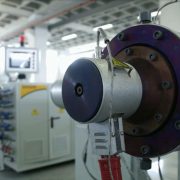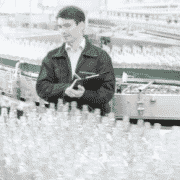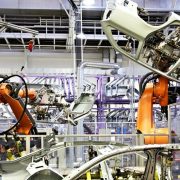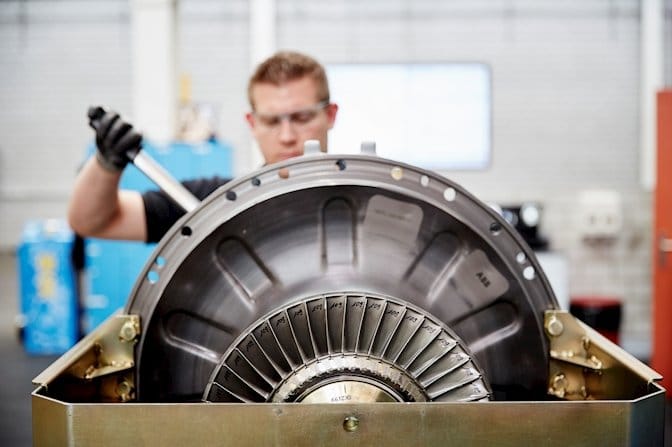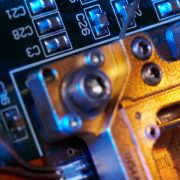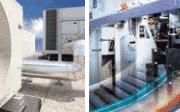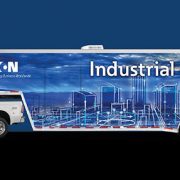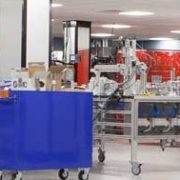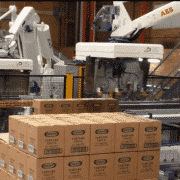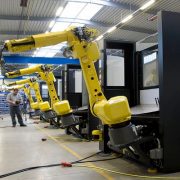Differences Between ABB ACS550 and ACH550 VFD
The are many differences between ABB ACS550 and ACH550 VFD products. If an exact replacement is unavailable, it’s important to know the differences between the ABB ACS550 and ACH550 VFD before deciding on which product to order.An ABB ACH550 can only be replaced with an ABB ACS550(or vice versa) in unique circumstances. The goal of replacing any drive is to get your machine running again, as efficiently & quickly as possible, without negatively impacting the application. This can be achieved by consulting an ABB certified low voltage drives integrator.In unique circumstances where an ACH550 can be replaced with an ACS550, maintenance technicians can potentially improve throughput and delivery while decreasing installation time and hardware cost.
The type of product is one of the main differences between ABB ACS550 and ACH550 VFD products. The ACH550 is an industry-specific drive, used mainly for HVAC (heating, venting, and air conditioning) applications. The ABB ACS550 is a general purpose drive (used by manufacturers, refineries, OEM’s, farmers, etc.) The keypad differences between ABB ACS550 and ACH550 VFD products makes them incompatible with each other.
Macros – differences between ABB ACS550 and ACH550 VFD
Macros are also key differences between ABB ACS550 and ACH550 VFD products. On pages 49-66 of the ACH550 user manual,technicians are able to view the following macros that are unique to the ABB ACH550:
- HVAC Default
- Supply Fan
- Return Fan
- Cooling Tower Fan
- Condensor
- Booster Pump
- Internal Timer
- Dual Setpoint with PID
- Eclipse Bypass Macro
- Bypass – Many more Bypass Options which are more commonly used in HVAC.
Fieldbus unique to ACH:
- BACnet Router BACnet /IP to MS/TP
- Lonworks
- Metasys (JCI)
- Profibus DP/FMS
Start Enable 1 & 2 on the ACH550 has permissive start interlock inputs that are typically used for connection of safety interlock contacts (Firestart, Freezestat). This makes the ACH550 drive inoperable and closes dampers during fires.
ACS550 Communications – differences between ABB ACS550 and ACH550 VFD
The following ABB ACS550 communications options are included in the ACS550 drives shipping package when purchased new but they are Not installed:
- Speed Pot, Start / Stop and Fwd / Rev Switches
- DeviceNet Adapter
- Profibus DP Adapter
- CANopen Adapter Module
- ModBus RTU Adapter
- ControlNet Adapter
- Ethernet Adapter
- Dual Port Ethernet Adapter
Experience – differences between ABB ACS550 and ACH550 VFD
Precision Electric has been working closely with manufacturers, OEMs, refineries, utilities and other customers in the industrial electrical field since 1983. Precision Electric offers the following onsite and in-house services: industrial electrical equipment repair and replacement, PLC programming, installation and repair; board repair, control cabinet design& manufacturing; customized engineered retrofit packages, AC & DC electric motor repair & rewinding services, and many other services to customers across the USA. Many repair centers in the USA send their customers’ equipment to Precision and then they markup the repair cost to their customers.
Precision Electric is an authorized & trained integrator, certified start up center and distributor for ABB low voltage drives. Precision Electric strongly suggests that technicians contactan ABB low voltage drives integrator before replacing an ACH550 with an ACS550(or vice versa). Replacing an ACH550 with an ACS550 may seem like a good idea to buyers if it’s saving their employer money on the hardware end. But, if the ACH550 drive-specific functions are needed in the application, the “money saved” will actually end up costing the buyer more money, time, throughput and possibly even their job.
For ABB ACS550 and ABB ACH550 documentation, visit the ABB Website. For ABB replacement or repair inquiries, contact Precision Electric.

